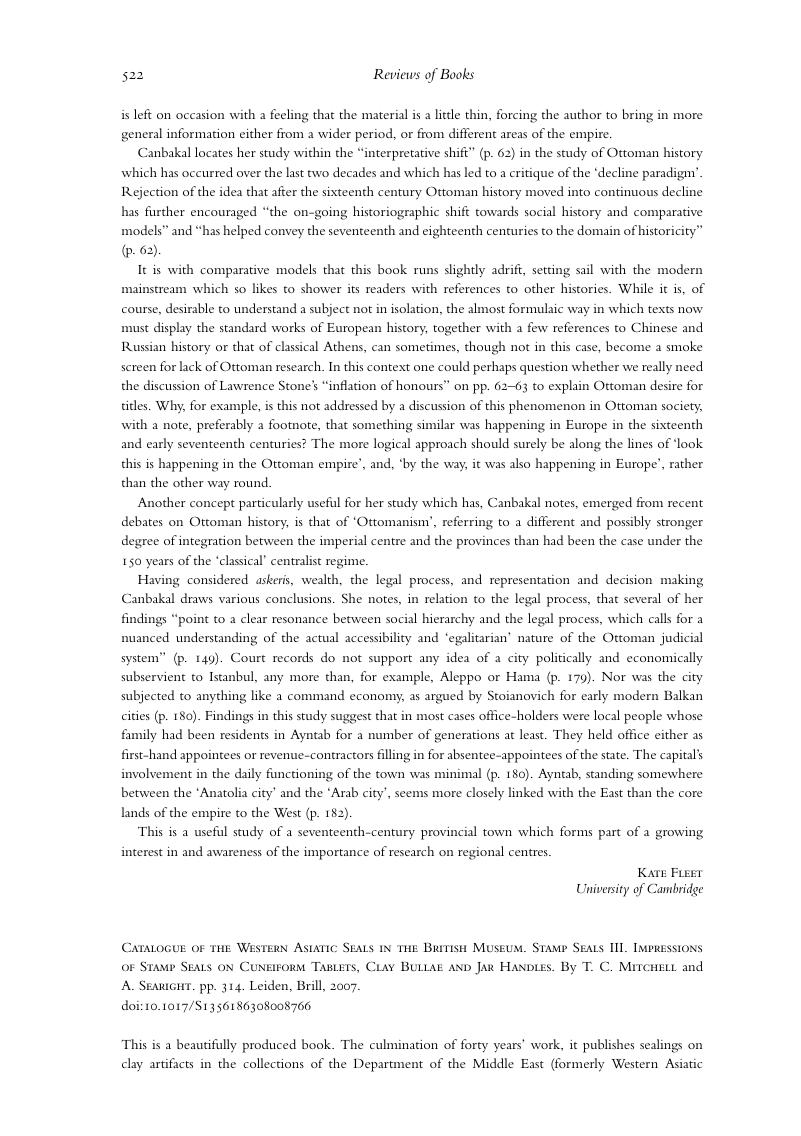No CrossRef data available.
Article contents
Catalogue of the Western Asiatic Seals in the British Museum. Stamp Seals III. Impressions of Stamp Seals on Cuneiform Tablets, Clay Bullae and Jar Handles. By T. C. Mitchell and A. Searight. pp. 314. Leiden, Brill, 2007.
Published online by Cambridge University Press: 19 September 2008
Abstract

- Type
- Book Review
- Information
- Copyright
- Copyright © The Royal Asiatic Society 2008
References
1 A very good example of this is in the impressions of the stamp with the cuneiform inscription dDUH.DUH on the left side (cf. No. 377, where the other occurences are also listed). Bearing in mind that there was an established iconography for the indigenous Mesopotamian gods, and that this inscription occurs on the seal of a sepīrm (Aramaic scribe), could this be a way of writing the name of an Aramean god?
2 For the latest interpretation of these see M Roaf & A Zgoll, “Assyrian Astroglyphs: Lord Aberdeen's Black Stone and the Prisms of Esarhaddon”, ZA 91 (2001) pp. 264–296.
3 There are exceptions, for example No. 377 (BM 75492) which is listed and drawn, No. 400 (BM 64082) which is listed but not drawn.
4 Example are No. 398 (BM 60662), No. 448 (BM 64098) and No. 475 (BM 65771), but there are many others.
5 The lack of heed paid to the cuneiform is in sharp contrast to the attention given to Aramaic inscriptions. In No. 80 (ND 2348) the Aramaic is translated but the cuneiform is not.
6 Thus on p. 18 Mitchell attributes George Smith's 1876-11-17 collection to Sippar and Tell ed-Der, following Budge, although it is well known that these texts are from the Egibi archive from Babylon. He then repeats the same incorrect Sippar provenance for the 80-10-12 and 81-6-25 collections (and the references to Reade and Walker do not support him).
7 C Waerzeggers, “The Babylonian Revolts against Xerxes and the End of the Archives”, AfO 50 (2003) p. 150–173.




